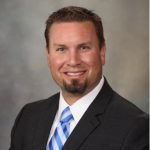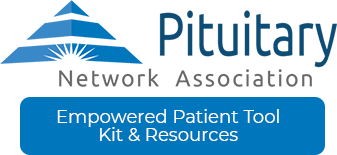 This month the PNA Spotlight focuses on Dr. Jamie Van Gompel with the Mayo Clinic in Rochester, New York. There he serves as Professor in Neurosurgery and Otolaryngology; Assistant Program Director of Neurosurgery Residency; and consultant in the departments of neurosurgery and otorhinolaryngology.
This month the PNA Spotlight focuses on Dr. Jamie Van Gompel with the Mayo Clinic in Rochester, New York. There he serves as Professor in Neurosurgery and Otolaryngology; Assistant Program Director of Neurosurgery Residency; and consultant in the departments of neurosurgery and otorhinolaryngology.
Dr. Van Gompel started out at the University of Wisconsin with a Bachelor of Science degree in biochemistry, medical microbiology and immunology. He then proceeded to earn his M.D. there as well. He went on to complete a certificate program in clinical and translational research at the Mayo Clinic. He then did a fellowship in skull base and complex cranial surgery at the University of South Florida. He was kind enough to answer a series of questions from the PNA. Here are his answers:
• What inspired you to choose your career path?
I am not sure where my fascination with the pituitary gland started, but when I became interested in medicine, I knew I wanted to operate on the endocrine access. Dr. Chen, a huge influence in my life, was chief of endocrine surgery at the University of Wisconsin. He was my primary mentor in medicine and showed me how complicated endocrine surgery could be. I was so fascinated that operating in one part of the body could affect another part so much, as we see in the pituitary gland. Later, we worked with MEN1 mutations in his lab, which I found quite interesting. Fast forward to my work at the Mayo Clinic, the institution in which arguably thyroid hormones were first described and where cortisol was discovered – and where one of the greatest pituitary surgeons of all time – Dr. Ed Laws – started his career, I could not help but be seduced by the field of pituitary surgery. I was fortunate to train with excellent pituitary surgeons of high volume who brought endoscopic pituitary surgery to the Mayo Clinic. Every day I find that something in my life confirms my sincere interest in pituitary surgery.
• What is the primary focus of your work/research?
My focus is on clinical outcomes in pituitary surgery. I try to enhance my craft by performing surgery in a way that is accurate, safe, and gentle while preserving as much normal anatomy as I can. Therefore, I feel that anatomical research is extremely important. However, I realize that, as the primary consult for intervention, it is critical that I recognize that medical alternatives are important as well. They should be considered, because they have the potential to preserve patient well-being and quality of life while treating the patient’s symptoms. As a real life example, we were one of the first institutions to treat Brafv600E papillary craniopharyngiomas with medical treatments. While I acknowledge that the concept was pioneered by the group in Boston, after the first case report appeared we adopted this method quickly. We supported the research because it was the right thing to do for the patient.
• What do you consider to be the future of your field?
The future of our field is to continue to pursue excellent outcomes with surgery. Hopefully with some of the more difficult tumors (that are not surgically curable like large growth hormone-secreting tumors involving the cavernous sinus) we can help our patients by finding treatments that complement or obviate surgery.
• What should patients know about your field/what deserves more recognition/awareness?
Although all surgeries are scary, most patients do very well after pituitary surgery with minimal complications. It is critical to have your first surgery with a surgeon who has experience and does the procedure routinely (more than 50 transsphenoidal procedures per year) to ensure you can maximize your surgical outcome on the first operation. This gives you the best chance of avoiding a second surgery or an adjuvant treatment, like radiation.
• What would you like to convey about yourself to your patients?
I do more than 100 pituitary procedures a year, and address not only tumors of the pituitary gland but also conditions that involve areas around the pituitary gland, such as the cavernous sinus and optic nerves. In my opinion, a surgeon should not solely think about the approach, but also about the patient outcome. The surgeon should be well-versed in open and endoscopic procedures in order to understand the nuances that lead to excellent patient outcomes.
• Why did you get involved with the PNA and what is the extent of your involvement?
I got involved with the PNA because it is a critical resource for patients to have an unbiased patient-centered resource to provide information valuable to those in their most critical times of need. The PNA attempts to bring those interested in treating the disease together with those suffering from the disease. I hope to ease patient suffering by being involved with the PNA.



